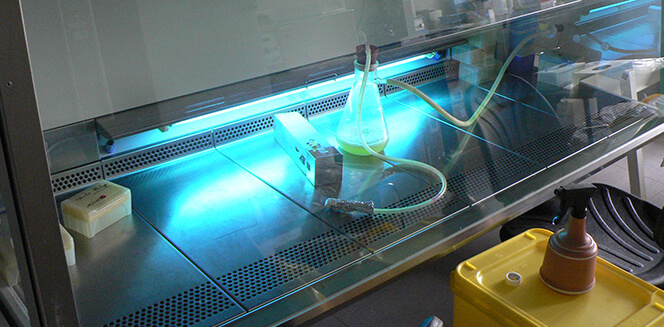UV Light Stabilizer Market Share Rises by 70% Confirms an AMR Report

1 Oct
2015
Exposure to ultra violet radiation often results in the loss of mechanical attributes such as stress. UV radiation just accounts for a small part of sunlight but leads to the degradation of both natural and artificially created polymers. True, exposure to UV rays causes many products made from materials like polymers to crack or simply stop working. However, adding UV light stabilizers at the manufacturing stage can save them from degrading. Light stabilizers help your car tire stay black. Furthermore, polymer additives prevent the road cones from shattering due to heat.
Benefits of UV Stabilizers
Absence of such vital additives in everyday products would result in poor performance. Besides visible change in their color, the products would lose their flexibility and become prone to cracking and chemical transformations.
Popular Types
Basic types of UV light stabilizers that work with an array of polymers are UV Absorbers, hindered amine light (HALS) and quenchers.
UV Absorbers
As the name suggests, UV absorbers soak up the ultraviolet radiation. They prevent the ultraviolet radiation from getting soaked and coverts it into heat that can be harmlessly dissipated. The most commonly used UV absorbers is carbon black. Another absorber that is slowing finding acceptance in the market is rutile titanium oxide. This type is found highly beneficial in 300 to 400 range. However, industry experts confirm that it is not effective in UVB wavelength below 315. Other widely used ultra violet stabilizers consists of hydroxyphenybenzotriazole and hydroxybenzophene. Both work wonders for neutral applications. Ultraviolet absorbers such as benzophenones used for PVC and oxanilides for polymides have observed a significant adoption rate worldwide.
Hindered Amine Light or HALS
For a decade, hindered amine light has been an excellent choice. When exposed to light polymers starts cracking and free radicals form. Hindered amine light plays a vital part in trapping the free radicals and prevents damage. HALS products that available commercials may have structural difference but all share 2,2,6,6-tetramethylpiperidine structure. Owing to its acceptance as the most proficient stabilizer its consumption rate in the plastics industry is increasing rapidly. Likewise, the additive has helped in increasing the adoption rate of polypropylene in automobile sector.
Quenchers
Degradation usually occurs when specific components present in polymer called as chromophores soaks radiation. Quenchers tend to transfers energy produced by absorption. These stabilizers are considered less beneficial that hindered amine light and UV absorbers. Nickle quenchers are the most popular types used in the production of agricultural films. However, their acceptance has been limited due to the fact they include heavy metal. Industry experts say that these quenchers are not as beneficial as hindered amine light stabilizers analyzed above.
Prominent Applications of UV Light Stabilizers
The major applications of the UV light stabilizers include interiors, furniture, decking and flooring among others. Application in the interiors and furniture market today has seen a positive shift in terms of adoption rate. However, the volume consumed by flooring and decking sector occupies a major market share. Other recovery sectors include residential and housing industry that is driving the demand in regions such as North America and Europe.
Eyeing the recent developments in the market, Allied Market Research has published a market research report titled “World UV Light Stabilizers Market - Opportunities and Forecasts, 2014 -2020”. Study highlights that HALS occupies approximately 70% of the total market followed by the UV absorbers that occupies about 23% of the market share. The research takes a closer look at the major drivers, restraints and opportunities of the industry. Prominent market players such as Mayzo, Inc., BASF, Lycus Ltd and Clariant among others are also analyzed in the report.

Akhilesh Prabhugaonkar
Author's Bio- Akhilesh Prabhugaonkar holds a bachelor’s degree in Electronics Engineering from the reputed Vishwakarma Institute of Technology. He has a special interest in the fields of forensics, world history, international relations and foreign policy, sports, agriculture, astronomy, security, and oceanography. An ardent bibliophile and melophile, Akhilesh loves to write on topics of his interest and various other societal issues. This love for writing made him enter the professional world of content writing and pursue his career in this direction.
Avenue: Entire Library membership of Allied Market Research Reports at your disposal
- Avenue is an innovative subscription-based online report database.
- Avail an online access to the entire library of syndicated reports on more than 2,000 niche industries and company profiles on more than 12,000 firms across 11 domains.
- A cost-effective model tailored for entrepreneurs, investors, and students & researchers at universities.
- Request customizations, suggest new reports, and avail analyst support as per your requirements.
- Get an access to the library of reports at any time from any device and anywhere.
Related Post
-
Cash in Transit: How Advanced Telematics Improves the Security of Financial Service Businesses?
-
How Are Space Companies Reacting to the Growing Importance of Space Debris Monitoring and Removal?
-
How Is Integration of Teleradiology in Healthcare Businesses a Profitable Decision?
-
Revolutionary Technologies That Optimize the Potential of Minibus Businesses
-
Why Apparel Businesses Heavily Invest in Online Clothing Rental Services?
-
Herbal Tea: Why Is the Adoption of Sustainable Extraction and Packaging Techniques on the Rise?








